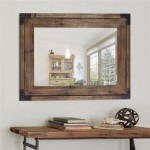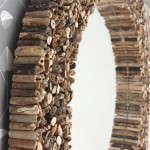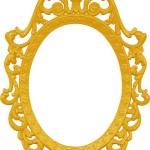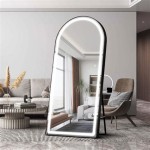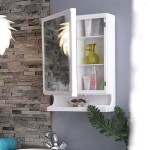Do I Need Mirrors When Towing a Caravan?
Towing a caravan requires careful consideration of safety regulations and best practices. One common query among caravan owners is the necessity of towing mirrors. Understanding the legal requirements and safety implications of using towing mirrors is crucial for a safe and enjoyable towing experience.
Legal Requirements for Towing Mirrors
The legality of towing without extended towing mirrors depends on the combined width of the towing vehicle and the caravan. In many jurisdictions, if the caravan is wider than the towing vehicle, extending the view using towing mirrors is a legal requirement. This regulation ensures the driver maintains adequate visibility along the sides and rear of the caravan, crucial for safe lane changes and maneuvering.
Specific regulations vary by region. It is the driver's responsibility to research and understand the local laws where they intend to tow. Failure to comply with these regulations can result in fines and penalties. Consulting official government resources or reputable caravanning organizations provides accurate and up-to-date information.
Safety Implications of Using Towing Mirrors
Beyond the legal requirements, towing mirrors significantly enhance safety. The wider field of view they offer allows drivers to monitor traffic in adjacent lanes, making lane changes safer and more predictable. This improved visibility minimizes blind spots, reducing the risk of accidents caused by unseen vehicles.
Reversing and maneuvering a caravan also becomes considerably easier with towing mirrors. The extended view allows the driver to judge distances more accurately and position the caravan precisely. This is particularly important when navigating tight spaces or reversing into campsites.
Types of Towing Mirrors
Various types of towing mirrors cater to different needs and vehicle types. Clip-on mirrors attach to the existing side mirrors of the towing vehicle, providing a temporary extension. These are generally a cost-effective solution suitable for occasional towing.
Strap-on mirrors offer another temporary option, securing to the existing mirrors with straps. These are known for their ease of installation and removal. However, it is essential to ensure they are securely fastened to prevent movement or detachment during transit.
Replacement mirrors offer a more permanent solution. These replace the vehicle's existing side mirrors and are specifically designed for towing, providing a wider field of view and often incorporating features like integrated indicators.
Choosing the correct type of towing mirror depends on factors such as the frequency of towing, the size and width of the caravan, and the driver's individual preferences. Considering these factors will ensure the chosen mirrors provide optimal visibility and comply with legal requirements.
Proper Adjustment of Towing Mirrors
Correctly adjusting towing mirrors is crucial for maximizing their effectiveness. The mirrors should be positioned to provide a clear view down both sides of the caravan, minimizing blind spots. The driver should be able to see the rear of the caravan in the mirror's inner section and the adjacent lane in the outer section. This allows for comprehensive monitoring of the surrounding traffic and the caravan's position.
Adjustments should be made before commencing the journey and may require further adjustments depending on the road conditions and the load being towed. Regular checks throughout the journey ensure the mirrors remain correctly positioned and provide optimal visibility.
Alternatives to Towing Mirrors (and Why They Are Not Recommended)
While some drivers might consider alternatives like cameras or relying solely on the vehicle's existing mirrors, these options do not provide the same level of safety and visibility as dedicated towing mirrors. Cameras, while useful, can suffer from limitations like distorted perspectives and reliance on screen displays, which can distract from the road ahead. Existing vehicle mirrors are typically not designed to accommodate the added width of a caravan, leading to significant blind spots.
Relying on these alternatives can compromise safety and increase the risk of accidents. Therefore, utilizing properly fitted and adjusted towing mirrors remains the most effective method for ensuring adequate visibility and safe towing practices.
Maintenance and Care of Towing Mirrors
Maintaining towing mirrors is essential for ensuring their longevity and effectiveness. Regular cleaning helps maintain clear visibility and prevents the build-up of dirt and grime that can obstruct the view. Inspecting the mirrors for damage, such as cracks or loose fittings, and addressing any issues promptly helps ensure they remain secure and functional.
Proper storage of removable towing mirrors when not in use prevents damage and extends their lifespan. Storing them in a protective case or a designated area can safeguard them from scratches and other potential harm. Following the manufacturer's instructions for maintenance and care ensures the towing mirrors remain in optimal condition and continue to provide reliable service.

Which Towing Mirrors Are Best For Your Caravan Allbrand Services

The Importance Of Caravan Towing Mirrors Guard

Tow Mirrors What Do They You Need Them

You Re Towing A Caravan Which Is The Safest Type Of Rear View Mirror To Use Theory Test

The Basics Of Towing A Caravan Lippert Europe

Do You Need Towing Mirrors For A Caravan In

Tow Mirrors What Do They You Need Them

The Importance Of Caravan Towing Mirrors
The Great Tow Mirror Debate F150 Ecoboost Forum

Do I Need Towing Mirrors For A Travel Trailer Rvblogger Shift Ctrl Esc


